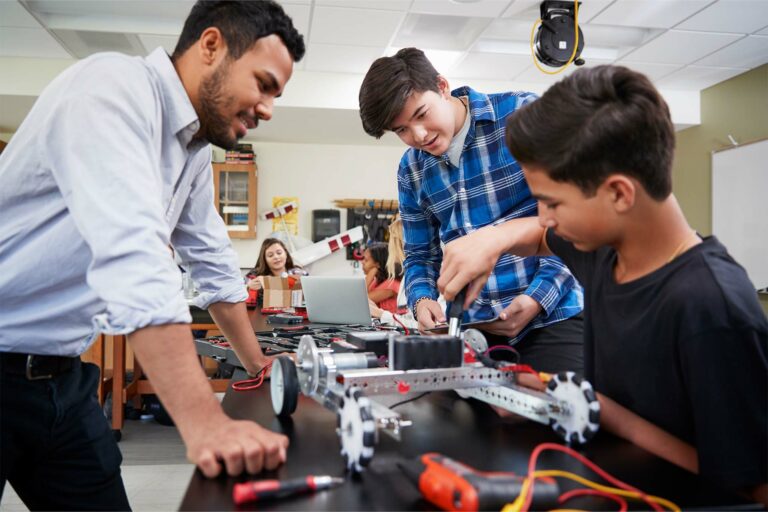Learning Blast: Explore Materials
Learn how engineers investigate and consider the properties of materials to select those that are most appropriate for the task.
Engineering effective solutions requires selecting materials that are best suited to the problem at hand. Technologies often have a number of components. As part of the engineering design process, engineers must choose materials that perform best for each component.
All materials have properties—they might be lightweight, waterproof, fuzzy, shiny, opaque etc. The properties help determine how the material behaves under certain conditions and how suited it is for particular tasks.
Youth build understandings of materials as they interact with their world. Through physical manipulation they come to understand which materials, for example, absorb water or reflect light. Thus, opportunities for youth to explore, test, observe, and describe how materials function are essential.
As you watch the video, think about:
- How do staff make the materials available to youth?
- What options and constraints do youth have as they select the materials they want to use?
Watch the video:
Share what you noticed:
- What was the most interesting thing you noticed in the video?
- How did youth explore the materials they had to work with?
- How did staff support their exploration?
- What would you do differently with this activity and set of materials?
What we know:
Before creating any technology, youth should have experiences that actively build their understanding of the materials that are available to use in their designs. Investigations that invite all youth to become familiar with the materials, their traits, and their behaviors are critical. Providing experience with materials before youth tackle the challenge focuses their efforts and allows more equitable participation.
Educators can help youth develop and utilize knowledge of materials during engineering. As challenges are introduced, key performance attributes should be described, for example, the bridge needs to be strong enough to support 2 pounds or the bandage needs to be flexible enough to allow the knee to bend 90º. Noting characteristics of successful designs signals which properties are important.
During the design challenge, youth should consider the available materials, predict which might work well, and explain why. In diagrams of their technologies, students should be encouraged to communicate and document their materials choices by labeling each. And after testing designs, youth should reflect on the materials the used, the fundamental properties of them, and how they affected the performance of their designs.
Key-Take-Away:
By manipulating and considering which materials are effective in a design, youth develop familiarity with materials and properties that can guide design decisions. These competencies will serve them in other areas of their growth as well, as they develop hands-on knowledge of the physical world around them.
Reflection:
Now that you’ve watched the video, reflect on what you saw.
- How could you adapt the grape smasher activity to encourage youth to explore materials? What would you change?
- Brainstorm at least three strategies to help youth connect their own experiences with different materials to how engineers work?
- What can you do to support youth developing hands-on knowledge of the world around them?


